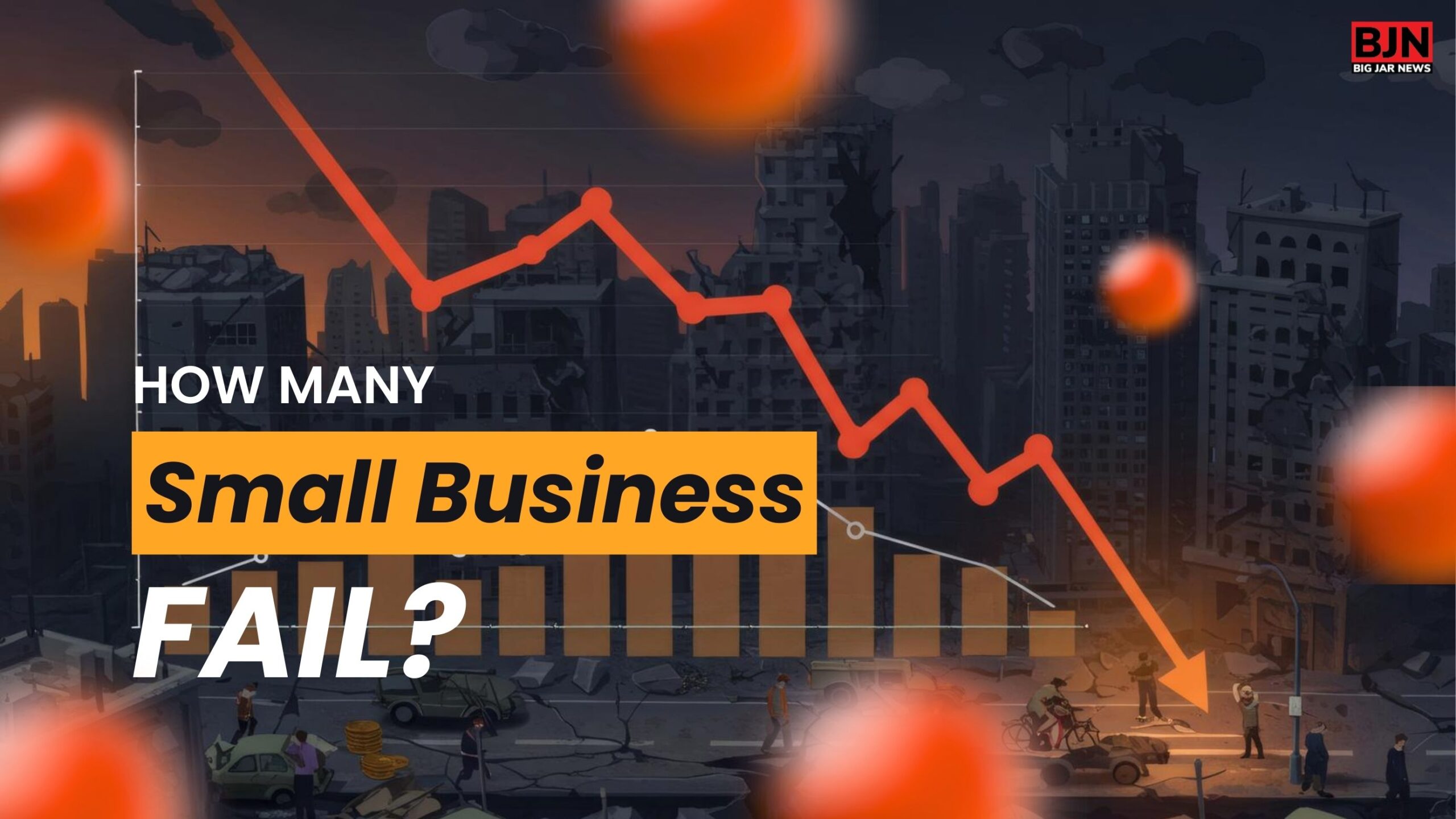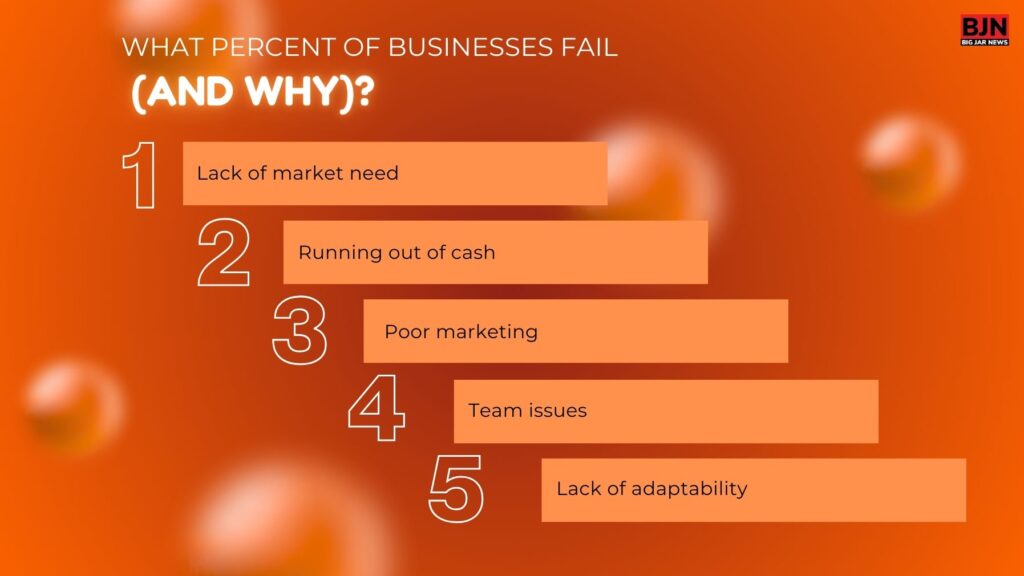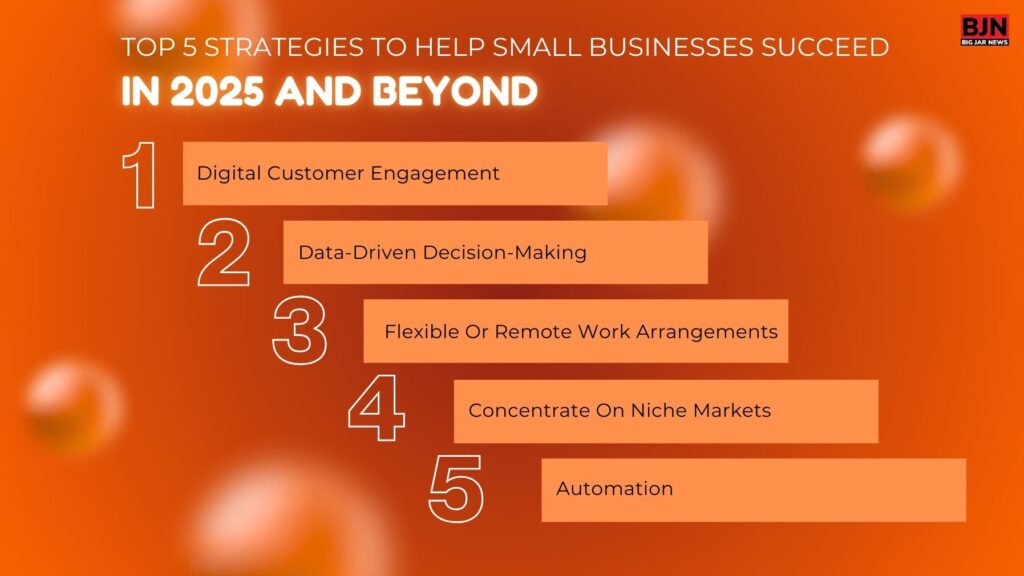How Many Small Businesses Fail? Here’s What the Numbers (and Reality) Say
by Pijus Maity Small Business 12 May 2025

Starting a business is exciting—there’s energy, optimism, and a big dream! Something that fuels every late night and every cup of coffee.
But? Now, let’s be real for a moment: even with such passion, how many small businesses fail? And most importantly, why?
You might’ve heard the gut-punch stat that over 90% of small businesses go belly-up in the first five years. Is it true?
Is the journey of an entrepreneur really that dangerous? Ready to learn more about it? Let’s dig into the facts, bust a few myths, and explore how to improve your odds of success in today’s world.
What’s the Real Answer to “How Many Small Businesses Fail?”

First things first—you might have seen people saying 90% of small businesses fail in the first five years. But I personally think that’s not totally correct.
And yes! I do have the data to prove it. Let’s get the numbers straight. According to data from the U.S. Bureau of Labour Statistics,
- About 20% of small businesses fail within the first year, and roughly 50% don’t make it past the five-year mark.
- By the ten-year point, only around 35% of small businesses are still in operation.
So no, it’s not accurate to say that more than 90% of small businesses fail in the first five years.
That number might be floating around on social media or exaggerated in startup war stories, but the actual failure rate is closer to 50% within five years.
So when we ask how many businesses fail in the first 5 years, the answer is: around half. That’s still significant, but not as terrifying as the 90% myth.
What Percent of Businesses Fail (and Why)?

To put it in simple terms, what percent of businesses fail? About 1 in 5 in the first year, and 1 in 2 within five years.
Now, let’s break down why this happens.
Here are the most common reasons small businesses fail:
1. Lack of market need
This is surprisingly common. About 42% of failed startups report this as the primary reason. You could have a great idea, but if no one wants it, the business won’t stick.
2. Running out of cash
Around 29% of small businesses fail simply because they run out of money. Cash flow problems are like a slow leak—if unnoticed, they’ll eventually flatten your tires.
3. Poor marketing
You can’t sell what people don’t know exists. Failing to reach the right audience is a quiet killer for many businesses.
4. Team issues
Dysfunctional teams or poor hiring decisions can weigh heavily on productivity and decision-making.
5. Lack of adaptability
Businesses that can’t pivot or evolve in response to market shifts or customer feedback often find themselves left behind.
Quick Note:
Business failure rate by industry, some sectors are more vulnerable than others:
- Restaurants: These have high startup costs and razor-thin margins. The worst part? They face fierce competition. Their 5-year failure rate can be upwards of 60%.
- Retail: Retail is highly competitive. Many small players are failing to compete against e-commerce giants like Amazon.
- Construction: This industry keeps fluctuating depending on the economy. If we look at the statistics, about 53% fail within five years.
- Healthcare and social assistance: Surprisingly, these tend to have lower failure rates, especially in the private practice niche.
- Tech startups: While they grab headlines, around 70% fail within 10 years, often due to product-market misfit or scaling too fast.
Are Small Businesses Doomed? Not Even Close.

Let’s not deny the fact that the odds aren’t challenging. But I cannot agree with the idea that small businesses are “doomed to fail”, not at all.
Half of them do make it past five years. And many who fail try again, smarter and stronger the next time.
Plus, nowadays, entrepreneurs have more tools than ever! From data analytics, digital marketing, and automation to global reach! So, all thanks go to the internet.
So instead of focusing on how many small businesses fail, let’s switch gears to something more productive: how can businesses thrive?
Top 5 Strategies to Help Small Businesses Succeed in 2025 and Beyond

Let’s talk about success! While we are here to understand how many businesses are failing or why, it is also necessary to understand what can help small businesses succeed!
Here are five of the most recent strategies that are proving to be effective for small businesses these days.
Digital Customer Engagement
The first is to prioritize digital customer engagement. Nowadays, individuals don’t just go to shops or call businesses—they discover brands while scrolling and swiping on the web.
Social media sites such as Instagram, TikTok, and YouTube Shorts enable businesses to engage with customers genuinely and authentically.
This is not just selling products—it’s building a brand community. Businesses that prioritise digital engagement are retaining customers more, with an average increase of 23% in 2024 over those that don’t.
Data-Driven Decision-Making
And then there is data-driven decision-making. Rather than attempting to guess what works, thriving small businesses rely on tools such as Google Analytics, HubSpot, and Shopify Insights to guide them.
These tools allow business owners to view data such as website traffic and customer behavior, and what types of products are generating revenue.
McKinsey states that companies that leverage their data often when making decisions are twice as likely to outperform their competitors.
Flexible Or Remote Work Arrangements
A third solution that’s picking up speed is offering flexible or remote work arrangements. It’s not only a COVID-trend—it’s a long-term trend.
Flexible work keeps skilled employees, saves money, and keeps employees happy. A 2024 FlexJobs report showed that 76% of employees at small businesses would leave their jobs if they were no longer able to work from home.
So, you must offer people control over their work schedule. This is gonna work out to be extremely beneficial for small teams and productivity.
Concentrate On Niche Markets
The fourth smart strategy is to concentrate on niche markets. Rather than trying to reach everybody, thriving small businesses discover special groups with unique needs and cater to them extremely well.
This might be a gluten-free bakery, a pet brand for senior dogs, or SEO services for dentists alone.
Niche businesses tend to have more loyalty and encounter less competition. Research indicates that niche businesses have a 30% higher likelihood of surviving for five years than general businesses.
Automation
Finally, there’s the disruptor—automation. Automating routine tasks saves time and minimises human error. Software such as Zapier, QuickBooks, and Mailchimp can handle tasks such as
- Invoicing,
- Email marketing,
- Tracking inventory, and
- Scheduling appointments.
This allows business owners more room to concentrate on high-level growth.
According to a recent survey conducted by Xero, 78% of small business owners who automated three or more tasks reported feeling much less stressed and more concentrated.
So, What Can We Learn from All This?
Indeed, starting and growing a small business isn’t a cakewalk. The numbers—whether you’re asking how many small businesses fail, or what percent of businesses fail—can look a little intimidating.
But numbers alone don’t tell the whole story.
Behind every failed business is a learning curve, and behind every successful one is a mix of strategy, perseverance, and adaptability. Today, businesses have more opportunities, tools, and access to information than ever before.
Yes, about 50% of businesses don’t make it past year five—but that means the other 50% do. And many of those go on to become stable, thriving, even life-changing ventures.
Here are some things to remember!
Instead of fearing failure, entrepreneurs should study it. Learn what went wrong, why it happened, and how to avoid the same traps.
Be open to evolving. Keep your ear to the ground. And most importantly, stay connected to your customers.
Ask the right questions, like:
- What do my customers want?
- Am I solving a real problem?
- Is my cash flow under control?
- Can I do more with fewer manual tasks?
- Am I adapting to new trends, technologies, and behaviours?
Because at the end of the day, the question isn’t just how many small businesses fail, but what makes the ones that succeed different?
The answer? Resilience, data, community, and a clear purpose.
Ready to be part of the 50% that make it—and thrive?
Also read



































































































